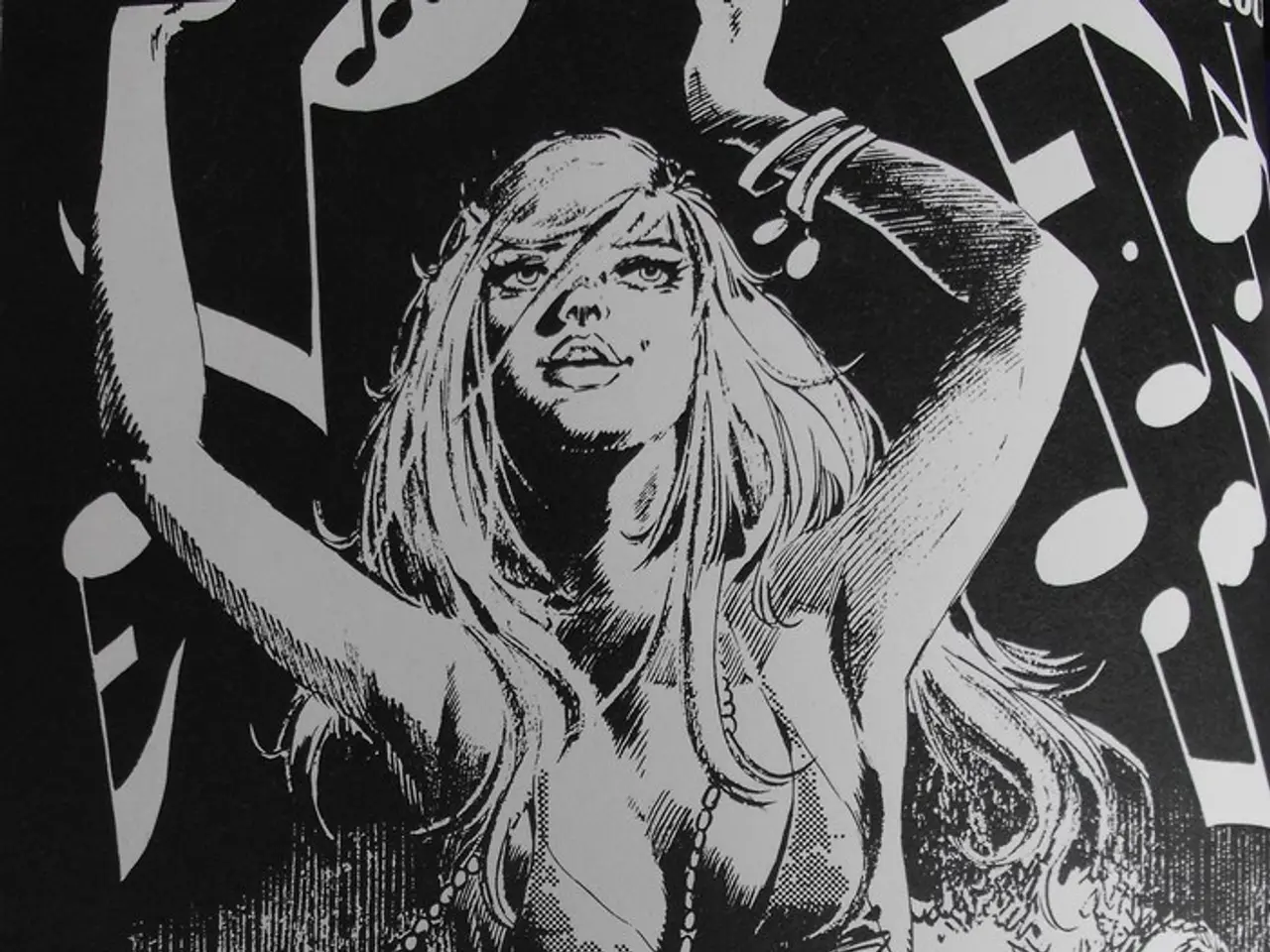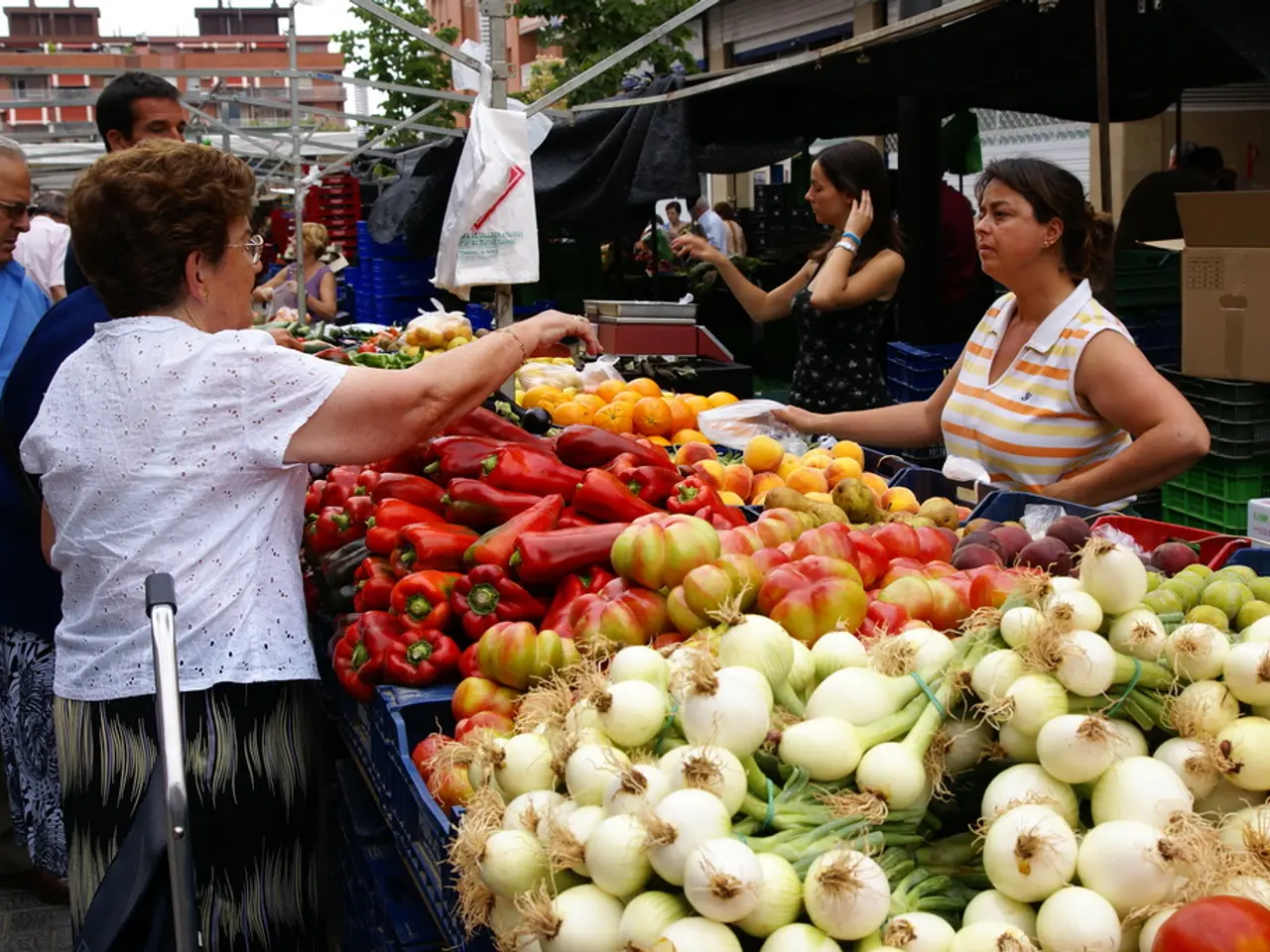Identifying Common British Garden Birds: A Guide to Recognizing Them
In the splendid world of nature, there's no better way to connect than by watching birds flit about in your very own garden. From the melody of chiffchaffs as you weed the borders in spring to the rustic charm of redwings pecking at snow-covered feeders, these feathered friends bring life and delight to our outdoor spaces all year round.
Attract these avian visitors effortlessly – it's all about knowing what not to do as much as what to do. Steer clear of using insecticides and herbicides, let trees, shrubs, hedges, and climbers mature, create numerous spots with excellent undergrowth cover, and allow herbaceous plant material to linger over the winter. By cultivating a garden that fosters healthy soil and a biodiverse insect population, you'll not only encourage mammals, amphibians, and birds but also berry-bearing plants, which are on the menu for many common garden birds.
Provide the perfect conditions for our fine-feathered friends to feed, roost, and nest, and they'll swoop right in. So, without further ado, let's take a look at some of the UK's most popular garden birds and their charming quirks.
House Sparrow, Passer domesticus
Simply irresistible in their gregarious nature, house sparrows love to nest in building holes or grouped nest boxes on house walls. Males sport a brown back with a grey cap and black bib, while females and younger birds are less marked. To support their nestlings, supply a plentiful variety of small invertebrates, as they'll need plenty in the spring. Although still common in UK gardens, house sparrow populations have seen a significant decline in the past 50 years.
Blue Tit, Cyanistes caeruleus
Characterized by its vivid blue cap and wings, this charming tit delights in peanuts and sunflower hearts at garden feeders. This lively bird feeds its young caterpillars and insects in the spring and early summer. During the winter, blue tits travel in groups, often alongside small birds like goldcrests, through woods and gardens.
Starling, Sturnus vulgaris
Starlings stand out with their striking glossy black bodies and white, green, and blue iridescent markings. These charismatic birds gather in massive flocks to feed and roost, often performing mind-boggling synchronized 'murmurations' during dusk – an apparent tactic to safeguard individuals from avian predators like peregrine falcons. In winter, they are drawn to garden bird feeders for invertebrates and seeds, while they feast on berries in the summer.
Woodpigeon, Columba palumbus
Elevating the status of the ordinary pigeon, the remarkable woodpigeon boasts a tender pink breast, a blue-grey head, and a white neck patch – making it the largest of the UK's pigeons. Year-round pair nesting, while their main breeding season is in the summer, see them flit among gardens, parks, woodland, and fields apart from migration periods.
Blackbird, Turdus merula
Males of this common thrush display their glossy black plumage with a yellow beak and eye-rings during the breeding season, whereas females are brownish, speckled like song thrushes but with less conspicuous speckles. Invertebrates and fruit are their diet staples, and blackbirds tend to nest in between forked branches in shrubs, trees, and climbers – making mature, densely planted gardens a perfect dwelling for these British thrushes.
Robin, Erithacus rubecula
Small yet feisty, the robin sings throughout the year with a mournful undertone especially prominent in winter. Robins are primarily ground feeders, opting for bird tables over hanging feeders. Their seed of choice is a sunflower heart mix rather than peanuts. Catch them by day searching for worms on lawns.
Goldfinch, Carduelis carduelis
Adorned with a striking red face, white cheeks, black cap, and golden-barred wings, the goldfinch captivates hearts with its collective name, known as a charm. These tiny seed-loving birds make for an exquisite addition to any garden.
Great Tit, Parus major
Distinguished by its large size, greeny-yellow wings, yellow breast, black head, and black breast stripe, the great tit can often be found on hanging feeders and deciduous trees. Like the blue tit, these birds commonly nest in bird boxes around the garden, starting to snuggle their eggs in spring.
Magpie, Pica pica
Striking due to their noisy chattering and incessant disputes, you won't be able to ignore magpies when they gather en masse for roosting. Nonetheless, these intelligent birds have a black and white appearance with a blue sheen and a long tail that reveals a hint of green.
Long-tailed Tit, Aegithalos caudatus
Bouncing through garden trees and shrubs in pairs during the breeding season and in flocks during the winter, these delightful little birds are characterized by their long tail, which nearly equals their body length. Boasting an intricate domed nest consisting of lichen moss and more than a thousand feathers, they feed primarily on insects and, when visiting gardens, on peanuts and fat at feeders.
Wren, Troglodytes troglodytes
Despite its diminutive size, the wren's powerful voice is impossible to ignore, especially when it sings and trills from its camouflaged undergrowth hiding spot. The wren moves with an upright stance and, at first glance, appears rather brownish with evident barring on its wings and tail.
Dunnock, Prunella modularis
In gardens, this unassuming little bird is often overlooked, yet it exhibits a sweet warbling song. You'll notice its upright stance as it moves along the ground. Its diet primarily consists of insects, including those that have been left unearthed by gardening activities.
Collared Dove, Streptopelia decaocto
First discovered breeding in the UK during the 1950s, the collared dove has made quite the home for itself, especially in rural areas. Distinguished by its small size, grey-pink color, and narrow black collar due to the tail, these doves make for fascinating garden guests.
Song Thrush, Turdus philomelos
distinctive song phrases, signature spotty breast, and habit of slaughtering snails open on stones naming the song thrush one of the most familiar birds to many a green-thumbed gardener. Sadly, population estimates indicate a significant decrease in recent years, largely due to habitat loss causing food shortages for young birds.
Greenfinch, Chloris chloris
Boldly colored, green-yellow plumage, a sturdy beak, and an enchanting twittering song are impressive hallmarks of the greenfinch. However, numbers have been negatively impacted in recent years by Trichomonosis – a parasite-induced disease causing deaths and known for spreading from bird to bird via contaminated feeders.
Redwing, Turdus iliacus
The redwing's brown back, creamy-streaked breast, cream stripe above the eye, and orange-red wing patches under flight are unforgettable characteristics. Arriving in the UK around October, the redwing returns to its breeding grounds in the spring, munching on ripe berries and fruit found in gardens, parks, and woodland.
Great Spotted Woodpecker, Dendrocopos major
In the garden, great spotted woodpeckers are often found raiding peanuts, mealworms, and suet from feeders. Only slightly larger than a starling, these woodpeckers feature primarily black and white plumage, with a red patch under the tail. Juveniles boast red crowns, while males sport a red rump.
Sparrowhawk, Accipiter nisus
Though unwelcome by backyard birders, the elusive and powerful sparrowhawk swoops down on garden feeders to gobble up tits and finches. While it's a cause for concern, research suggests that sparrowhawk predation does not significantly affect overall population numbers.
Feral Pigeon, Columba livia
Resulting from the domestic pigeon's ability to escape and adapt to the wild, feral pigeons are commonly encountered in many gardens, often seen moving in small flocks. Their wild ancestor, the rock dove, remains limited to coastal areas of Scotland and Northern Ireland, while the feral pigeon flourishes across the entire UK.
Jackdaw, Coloeus monedula
The smallest members of the crow family, jackdaws are easily identified by their black plumage, grey nape, and pale irises. These social birds are often heard loud and clear, and they feed on a variety of leftovers, grains, fats, fruits, and insects.
Blackcap, Sylvia atricapilla
Donning an adult male's black crown and an adult female's brown crown, blackcaps exhibit a grey body with grey-brown wings and a melodic song. Nesting in shrubby undergrowth, their song is reminiscent of that of the garden warbler but distinctly different due to its numerous chiff-chaff repeats.
Chiffchaff, Phylloscopus collybita
Having descended from North Africa and the Mediterranean, it's no surprise that chiffchaffs arrive in the UK around March. These petite greenish-yellow warblers resemble willow warblers but display a completely different song, featuring their names repeated in a mesmerizing pattern – 'chiff-chaff chiff-chaff.' As insectivores, chiffchaffs do not frequent bird feeders.
Coal Tit, Periparus ater
Smaller than both great tits and blue tits, coal tits boast a black head with white cheeks and a prominent white spot at the back of the neck. They sport a buff body with blue-grey wings and feed primarily on conifer seeds and at seed feeders.
Siskin, Spinus spinus
Visiting gardens during the winter months to feed at seed feeders, these attractive little finches are easily recognized by their strikingly colored plumage. Males boast green bodies streaked with black, white-edged wings, and a yellow-green breast, whereas females display a less vibrant, streaky grey-green plumage.
Chaffinch, Fringilla coelebs
Identifiable with their striking orange head, blue-grey nape, and brown back, chaffinches are ground feeders that particularly love to eat the scraps and seeds left behind by other birds. Chaffinches tend to nest in trees and shrubs, requiring insects to feed both their parents and their chicks. The population of chaffinches has seen a dramatic decline since 2012, largely due to the parasite-induced disease, Trichomonosis. As with greenfinches, thorough cleanings of garden feeders can help safeguard chaffinch populations.
Tending a garden that encourages biodiversity will mainly help attract common British garden birds such as house sparrows, blue tits, starlings, woodpigeons, blackbirds, robins, goldfinches, great tits, magpies, long-tailed tits, wrens, dunnocks, collared doves, song thrushes, greenfinches, redwings, great-spotted woodpeckers, sparrowhawks, feral pigeons, jackdaws, blackcaps, chiffchaffs, coal tits, siskins, and chaffinches.
Sanitize garden feeders regularly to protect birds from parasite-induced diseases like Trichomonosis, which could lead to their decline in population.




